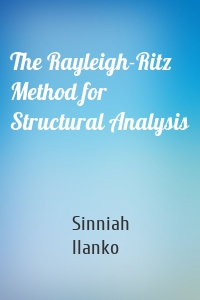Sinniah Ilanko
1 кн.
The Rayleigh-Ritz Method for Struct...
A presentation of the theory behind the Rayleigh-Ritz (R-R) method, as well as a discussion of the choice of admissible functions and the use of penalty methods, including recent developments such as using negative inertia and bi-penalty terms. While presenting the mathematical basis of the R-R method, the authors also give simple explanations and analogies to make it easier to understand. Examples include calculation of natural frequencies and critical loads of structures and structural...
| Автор | Sinniah Ilanko |


